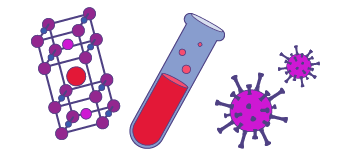Technically Antiferro and Ferromagnetic Resonance utilize the same technique as paramagnetic resonance, but the exchange interaction leads to different physics.
The anisotropy tends to be large in these samples, and high fields and frequencies are extremely useful in characterizing these systems, enabling the observation of (anti)ferromagnetic modes that cannot be detected at low fields. The thin films that are usually studied in ferromagnetic resonance because of the (more) isotropic demagnetization field are also particularly well adapted for study in high-field quasi-optical spectrometers.

Explore our magnet schedule to see what exciting research is happening on our stellar fleet of instruments right now.
Zorko, A., et al, Dzyaloshinsky-Moriya interaction in vesignieite: A route to freezing in a quantum kagome antiferromagnet, Phys. Rev. B, 88, 144419 (2013) Read online.
Herak, M., et al, Magnetic order and low-energy excitations in the quasi-one-dimensional antiferromagnet CuSe2O5 with staggered fields, Phys. Rev. B, 87, 104413 (2013) Read online.
Butera, A., et al, Magnetic resonance in RuSr2RECu2O8 (RE=Eu, Gd) ferromagnetic superconductor, J. Appl. Phys., 89 (11), 7666-7668 (2001) Read online.
Last modified on 22 August 2023